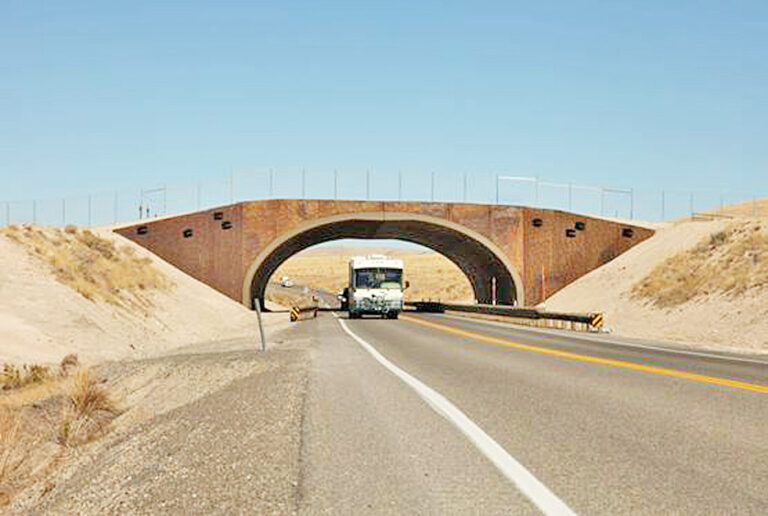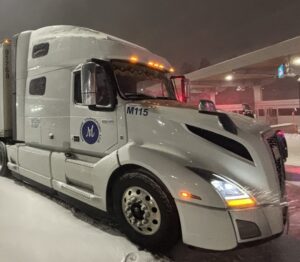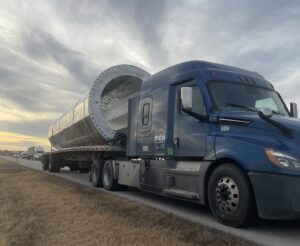CARSON CITY, Nev. — A research document just released by an international pool funded study led by the Nevada Department of Transportation (NDOT) provides an authoritative review of the most effective measures to reduce animal-vehicle collisions, improve motorist safety and offer safer crossings for wildlife.
Road ecologists and engineers, including from the Western Transportation Institute at Montana State University, have released Cost Effective Solutions: Literature Review, the first of many reports to be released by partners in the Transportation Pooled Fund Study (TPF-5(538): Wildlife Vehicle Collision (WVC) Reduction and Habitat Connectivity.
“With as many as 2 million collisions with large mammals in the U.S. leading to approximately 200 human deaths every year, the review compiled, evaluated and synthesized studies, scientific reports, journal articles, technical papers and other publications from the U.S. and beyond to determine effectiveness of 30 different mitigation measures,” an NDOT news release stated.
“Ultimately, the report provides best management practices to reduce animal-vehicle collisions, increase habitat connectivity, and implement cost-effective solutions.”
Key findings include:
- The most proven effective measures to reduce animal-vehicle collisions by over 85 percent while providing habitat connectivity remains wildlife fences in combination with wildlife overpasses and/or underpasses. Researchers now know that these measures must cover at least several miles to substantially reduce collisions with large mammal species.
- Traditional warning signs, educational campaigns, reducing posted nighttime speed limits, and other measures are in general less than 50 percent effective.
- Some mitigation measures are at least 50 percent or greater effective in reducing animal-vehicle collisions, including roadside animal detection systems, nighttime lighting, and reducing the size of the population of wildlife species involved. However, none of these measures reduce the barrier effect of the road for wildlife; some even increase the barrier effect.
- The ability to reduce animal-vehicle collisions with vehicle-based detection technology, especially in autonomous or smart vehicles, has not been studied in detail in real highway situations. While there are likely benefits of this technology for reducing collisions with large mammal species, the sensors typically do not detect smaller species. Furthermore, this technology does not reduce the barrier effect of the road and traffic for wildlife.
NDOT Northern Nevada Biological Supervisor and Large Mammal Mitigation Specialist Nova Simpson helps manage the study.
Simpson believes study results will help state and federal transportation, land management and wildlife agencies optimize efforts to reduce animal-vehicle collisions.
“This pooled fund study provides a very unique opportunity to synthesize current knowledge from the U.S., Canada, and internationally,” Simpson noted. “It will improve the cost benefit analyses of mitigation measures, field test improved designs and technologies; and coordinate and provide outreach to transportation, land management and wildlife agencies and their stakeholders. Ultimately, these efforts will help in the reduction of wildlife-vehicle collisions across the United States.”
Project information is available here and here.
NDOT officials say they have “installed many roadway improvements to reduce potentially dangerous animal-vehicle collisions in Nevada,” according to the news release.
Highways bordering the Virginia Range wild horse population have been fenced, including USA Parkway, U.S 50A north of Silver Springs and more than 30 miles of fencing on U.S. 50 between Dayton and Silver Springs.
In addition, NDOT installed three wildlife undercrossings in the area.
In northeastern Nevada, NDOT has installed nine safety crossings on Interstate 80 between Wendover and Wells and U.S. 93 north of Wells.
The wildlife overpasses are covered with native soil and vegetation to replicate the natural environment and encourage crossing by mule deer and other animals. Approximately 60 miles of 8-foot-high wildlife fencing installed on both sides of the roadway helps direct animals to the crossings.
Research conducted by the University of Nevada, Reno found that, during the first four years in which the U.S. 93 safety crossings were installed, more than 35,000 mule deer used a safety crossing; helping prevent potential collisions with vehicles and enhancing habitat connectivity.
NDOT has also installed 400 miles of tortoise fencing and 19 tortoise underpass/culvert crossings on U.S. 95 and U.S. 93 in southern Nevada to reduce wildlife-vehicle collisions and tortoise road mortality.
The Trucker News Staff produces engaging content for not only TheTrucker.com, but also The Trucker Newspaper, which has been serving the trucking industry for more than 30 years. With a focus on drivers, the Trucker News Staff aims to provide relevant, objective content pertaining to the trucking segment of the transportation industry. The Trucker News Staff is based in Little Rock, Arkansas.















